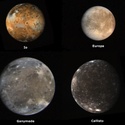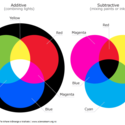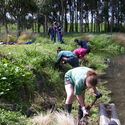This unit plan shows how teacher Matt Boucher extended his year 7/8 students’ learning about light by engaging them in hunting for exoplanets!
Students first learned about light: light waves travel in straight lines, shadows, colours in the visible spectrum and how light waves behave – reflection, refraction and diffraction. Then they put their learning into practice by becoming citizen scientists.
First, they needed to know that exoplanets are planets that orbit stars other than our Sun. Next, they used models to understand that, when an exoplanet transits a star, the light intensity that is seen being emitted from the star drops.
They used this knowledge to access actual datasets online, developing light curves and joining in actual projects to help identify new exoplanets – see Agent Exoplanet and Planet Hunters.
During this learning, Matt focused on students developing the science capability ‘Interpret representations’.
The unit also fitted well with the whole-school focus on Matariki.
Read more about Matt’s thoughts on the unit in this case study.
Download the Word file (see link below).
Update
The Agent Exoplanet project has now been retired, but one of the project partners, MicroObservatory, has released DIY Planet Search which does everything Agent Exoplanet did and more.
Related content
Find out more about using the citizen science projects Agent Exoplanet and Planet Hunters with your students and in the related case study.
In Hunting galaxies far far away – here’s how anyone can explore the universe astronomer Dr Sara Webb talks about her fascination with distant galaxies and provides information on some great online tools that can be used to look at our universe through the eyes of many different telescopes.
Acknowledgement
This unit plan was developed by teacher Matt Boucher as part of the Citizen Scientists in the Classroom education research project funded through the Ministry of Education’s Teaching & Learning Research Initiative.




